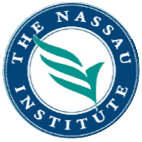This article appeared in Svenska Dagbladet on July 11, 2011 and is posted here with the kind permission of the author, Andrew Coulson, director of the Cato Institute’s Center for Educational Freedom in Washington, DC, and is author of Market Education: The Unknown History. Read more from Mr. Coulson here…
The central problem facing education systems around the world has not been a lack of excellent schools; it has been our inability to routinely replicate them. If you build a smarter cell phone or design a safer car, your sales increase, your company grows, and you spawn countless imitators. But education is different. If you find a better way to teach children, your innovations seldom reach beyond a single neighborhood.
Over the past two decades, Sweden and the United States have tried to address that problem in very different ways — with very different results. In the United States, philanthropists have donated hundreds of millions of dollars to replicate what they consider to be the best "charter schools" — semi-independent government schools. Sweden’s free schools system, by contrast, has allowed both for-profit and non-profit private schools to compete for the privilege of serving students.
To find out how well the U.S. approach is working, I recently studied the academic performance of California’s charter school networks (groups of two or more schools with the same management or teaching methods). I discovered that there is essentially no correlation between the performance of these networks and the amount of philanthropic funding they have received. That means philanthropists are indiscriminately replicating the bad and the mediocre networks as well as the good ones. On average, charter schools perform at about the same level as traditional government schools.
The Swedish experience has been quite different. A recent study by London’s Institute for Economic Affairs reveals that Swedish private schools are significantly outperforming government schools academically. According to official enrollment figures, private schools are also gaining market share from government schools — so the better schools are growing and crowding out the less effective ones. Excellence is "scaling-up."
But the Swedish private school experience is not uniform. While for-profit schools are growing substantially over time, bringing their higher quality services to more and more families every year, non-profit schools have experienced relatively little growth.
This striking difference in growth patterns is not unique to Sweden. The United States, for instance, has many highly-regarded non-profit private schools that have operated for a century or more. But rather than opening up new school facilities in order to serve more students, they have simply increased their tuition prices and added students to their waiting lists. Contrast that with the for-profit tutoring industry that dominates many Asian nations. One of the most dramatic examples is Kumon, a Japanese private tutoring chain founded in 1958, which now serves 4.2 million students in 42 countries.
In Korea, top tutoring firms also reach massive audiences, but in a different way. Rather than setting up thousands of physical school locations (as Kumon has), they deliver video lectures via the Internet. The best teachers attract tens of thousands of students as news of their effectiveness spreads, sometimes becoming national celebrities. One such celebrity teacher is Woo Hyeong-cheol whose math classes attracted 50,000 on-line students last year, earning him $4 million — more than most of the nation’s top professional athletes.
The obvious question is: why? What explains the consistent expansion of successful for-profit schools and the consistent failure of non-profit schools to match that growth? The answer is the same in education as in other fields: incentives. The only way a for-profit school can attract outside investment is to offer investors a financial return; and the only way to earn that return is to grow revenues by serving more students. Investors know this, and so they are extremely careful about the schools they choose to support. So investors have a powerful incentive to pick only the best for-profit schools, and the for-profit schools have a powerful incentive to grow. My research on California’s charter school networks suggests that philanthropists, who expect no financial return on their investment, are less careful in their choices.
To date, the profit motive has proven to be the only reliable way of ensuring that top schools and teachers routinely reach mass audiences, crowding out inferior services. Nations that exclude the profit motive from education have reduced the best schools to floating candles: beautifully illuminating their immediate vicinities, but doomed never to ignite a wider blaze.

